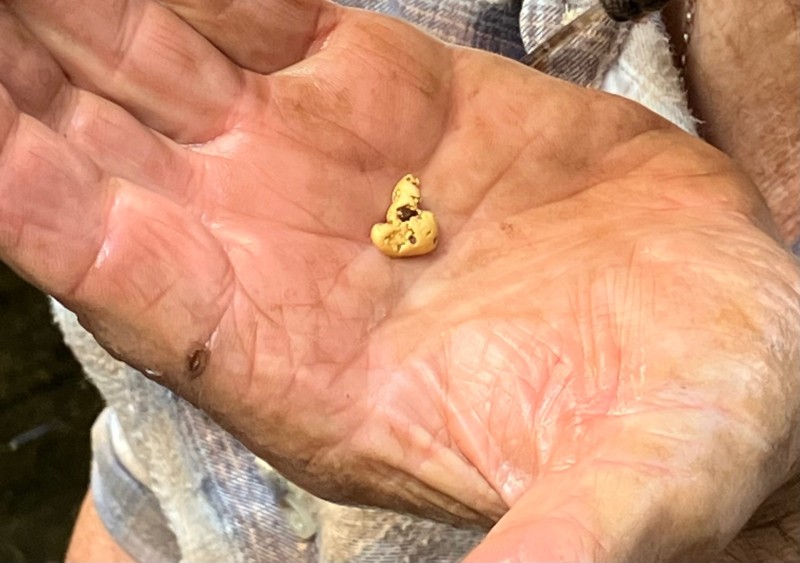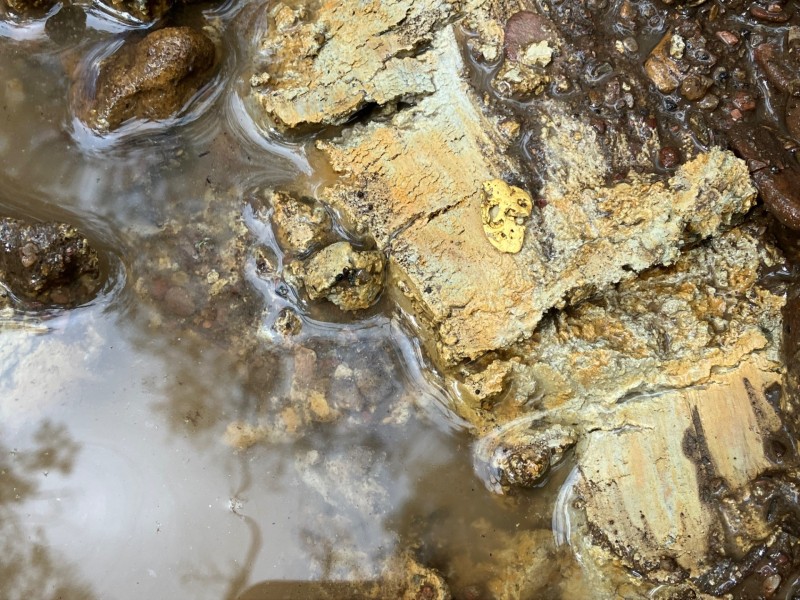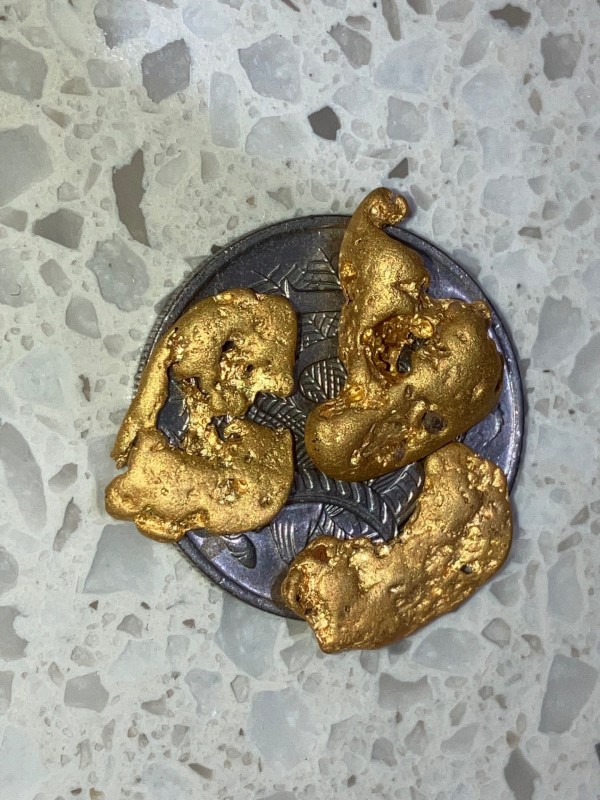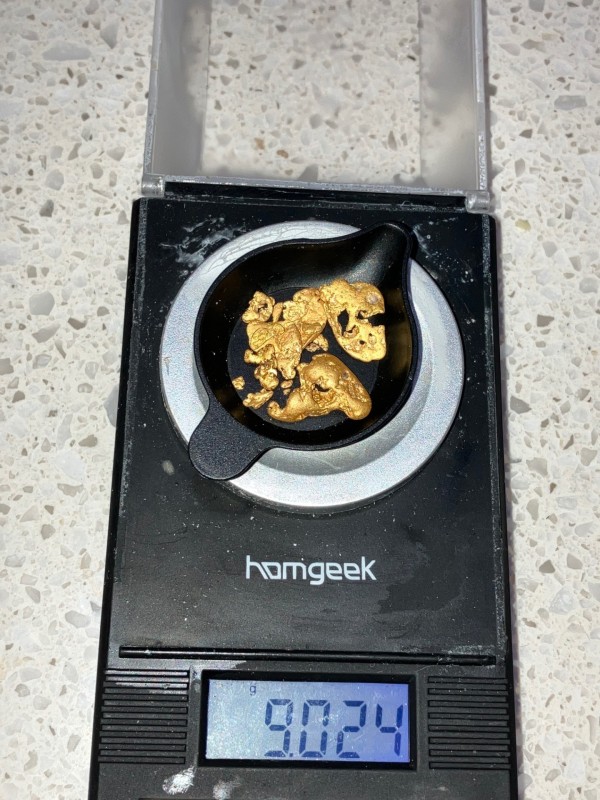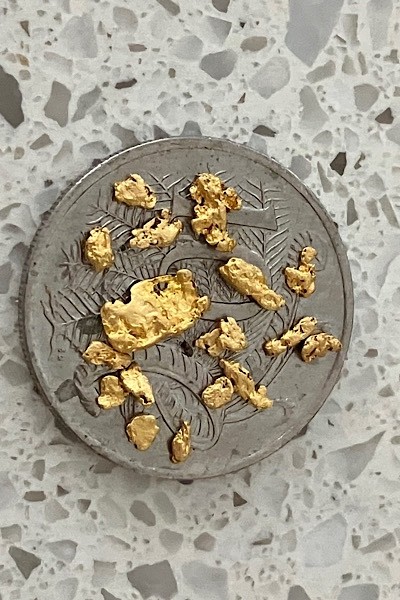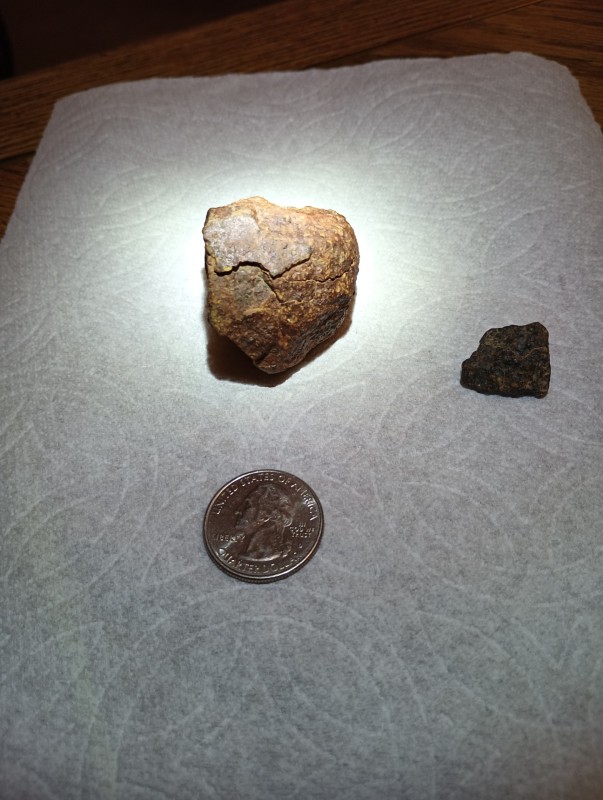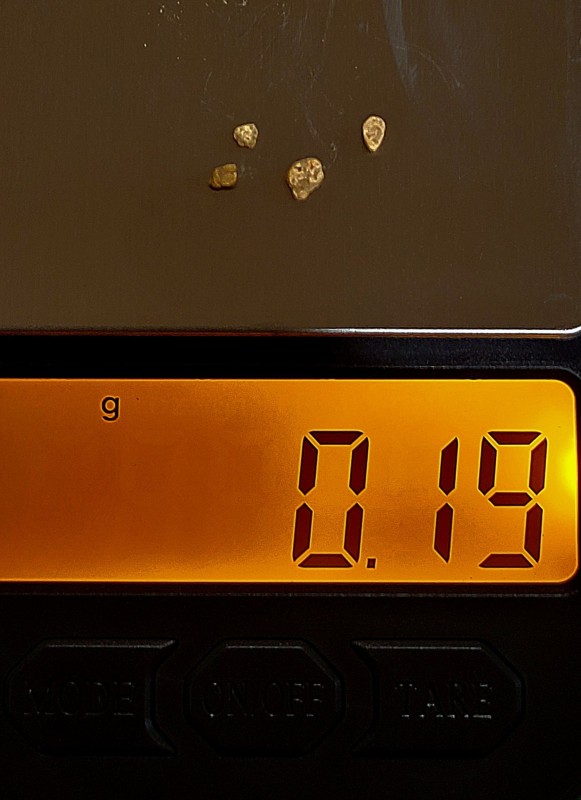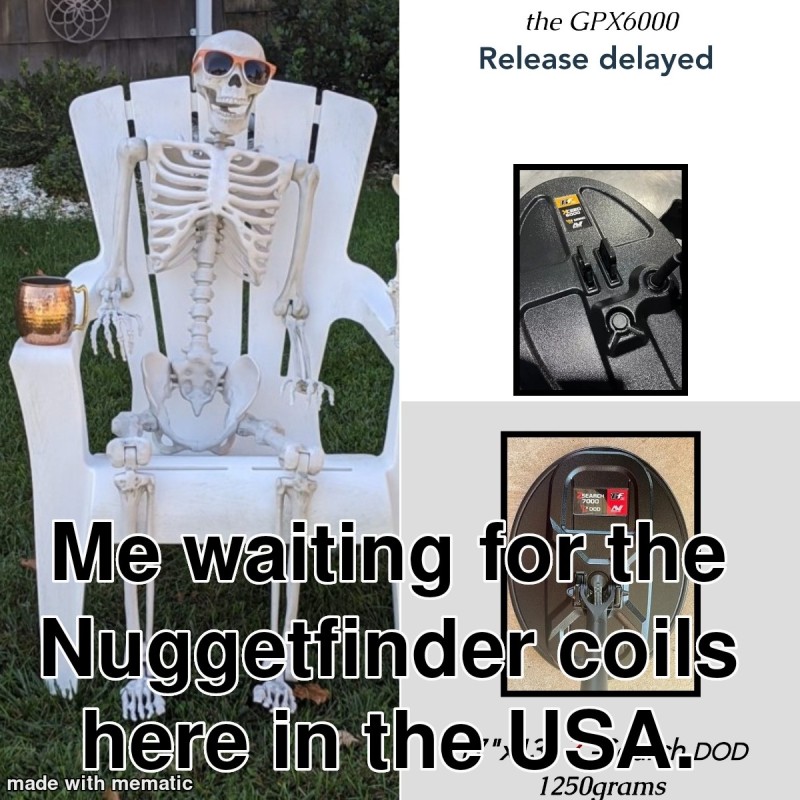Search the Community
Showing results for 'GPZ 7000 ferrite'.
-
Ceril, you are welcome to borrow my 7000 and/or the 5000 to see for yourself if they are any advantage to you on your patches. The 7000 has both the stock and 19” coils and the 5000 has many coils. The largest Evolution is 12”
-
I would have to wonder with using an older model ML PI or GPZ 7000 that the bigger deeper gold you are looking for has not already been found with them back in there day. Hence the GPX 6000 mopping up the crumbs these days. A very high chance that any ground you go over has already seen many a coil over it. The gold doesn't tend to grow back. D4G
-
Hi peeps, I have a mate in China asking if I can get some particular parts for GPZ 7000 due to wearing down, such as bulkhead, control box etc. He has a bunch of these machines waiting to be replaced. lol I have contact minelab and was told they don't sell parts to individual buyers.. Anyone know where to get them??? Cheers, Ethan
-

Using The 7000 To Pick Up The Scraps Missed By The 6000
Lesgold replied to Lesgold's topic in Detector Prospector Forum
Yesterdays largest nugget was a bit of a strange find. I watched and partially helped Joe dig two really deep holes for junk. He was exhausted and frustrated that neither target ended up being the right colour. It was just one of those days where his junk to gold ratio was higher than mine. My turn will come next trip. I moved a bit further upstream and started detecting the bottom of a long pool of water. Everything about it seemed right. It was much lower than the rest of the gully and it had washed out to a light grey decomposed shale bottom. It was potentially a good gold trap. Over the past couple of months we had popped a detector in that pool every time that we had walked past it but had never made the effort to work it properly. We were not setup to detect in water as we never carried waterproof clothing to enable this to happen. We had also dismissed the pools potential as we had met two groups of people on previous trips that had waders and wet suits with them. They were focussing on that type of area so we naturally assumed that this pool would have been given a thorough workout. I started detecting the bottom as well as I could with the z search coil by pushing it down onto the bottom of the pool and progressively moving out until I would run out of reach. There was no way the boots were going to get wet. This coil is hopeless in water. It is so buoyant that it takes considerable force to keep it on the bottom. Detecting efficiency is lost as you need to use both hands to keep the coil down. After a couple of minutes of detecting, I ended up getting a screamer of a signal. Joe was called up on the radio and he quickly arrived to help out. After listening to the signal, he had his boots off and was in the water before I could draw breath. After pinpointing the target, the scoop was used to bring up the clay/gravel mix from the bottom. On about the third or fourth scoop a shiny piece of gold came up sitting on top of the clay. It was a beautiful piece sitting there just smiling at us. We momentarily stopped and looked at it with our mouths open. Our plan was to find bigger gold at depth with the zed but this piece could have been found with an ice cream container lid bolted to a broom handle. As Joe had his boots off and pants rolled up, he detected the rest of the pool for no other signals. It just goes to show you that you must never assume anything in this game. We moved back closer to an area where I had picked up the earlier piece. I detected the right side of the gully when I found the first bigger nugget and decided to concentrate on the other side on the return trip. We had to leave early to get home so time was running out. About 20m down stream a very faint sound was heard which pulled me up. Again rocks were moved to get the coil a bit flatter to the creek bed. The subtle sound didn’t go away so hot rocks were ruled out. If it was going to be a target, it would be deep. Some material was removed and finally a signal started to develop. Stone and gravel was dug out using the pick and I continued until I hit a yellow decomposing bedrock material. By this stage the detector was really singing and I knew I was in with a chance. Joe came up and took one look at the hole and knew straight away that this was going to be a nice piece. He gave one big scrape with the pick, looked down and turned to me and said - “Did you drop that?” He pointed at the shiny, polished piece of gold sitting on the clay. We couldn’t believe what we were looking at. It had obviously moved with the last flood and had the appearance of a piece that had been sitting in acid. We picked it up and admired it before placing it back into position for the photo. We had to walk to where we left some gear and as per usual, Joe picked up another nugget on the way back. He has this uncanny knack of doing this on a regular basis. What started as a reasonable day ended up exceptionally well. The gold was cleaned up a bit last night. Here is a couple of shots showing what we ended up with. Its a good feeling when a plan comes together and you get results. It was interesting to note the difference in how the 6 and 7 ran in this particular area. The threshold on the 7000 was perfect. Very occasionally it would pick up a faint signal on a hot rock. These rocks appeared to be basalt. I reckon I hit less than ten of them for the day. The 6000 on the other hand was more erratic and reacted to the iron rich hot rocks which were generally red in colour. We would be constantly kicking those out of the way as they often gave off a signal similar to a deeper target. Darker soils and wet clay were also an issue for the GPX . With that being said, the 6 was still quite usable and had excelled in this gully. We both believe that the depth capabilities and the perfect threshold of the zed combined with the sensitivity of the Z Search coil helped us immensely in the past couple of trips. -
Both detectors 6 vs 7, have their strengths and weaknesses. When the GPX-6000 was 1st introduced into the Goldfields in the United States, it was easily the King of recovering missed gold of the GPZ-7000. As time has progressed and the options of smaller lighter coil options for the GPZ, it's showing more small gold capabilities (at an expense). Sure wish the coil manufacturers would be a little easier on the wallet, but at today's gold prices, they can get away with it. Sometimes just the change of Settings will help gather a few more nuggets and that's why so many hard core hunters realize, a site is never 100% hunted out. Heck, just a simple thing as soil moisture content or EMI, can easily effect a detectors capability and miss a nugget that otherwise would have been heard. Very interesting read and just goes to prove that not 1 detector is best for all situations.
-
I think the last part is definitely true, maybe the first part too. I did some experiments a while back and found that both large iron targets as well as high EMI levels caused the 6000 to adjust itself in manual, not just in auto. Further, by memory, I believe it stayed dumbed down even after the iron and EMI were removed to some degree, requiring a reset to really trust it was back to normal. I noticed this happening in the field at first but was unsure, but when I posted here a while back about this effect, other people didn't seem to see it, so I tested in my shop and found enough to change my trust in the 6000 personally. I've posted about this a few times in the past here. 6000 is a prospecting machine only to me. I toss it into auto+, and use it for what it is. What happens under the hood is too opaque for me to ever trust it over the 7000 for cleaning applications because there is no way to verify if I am running sub-optimally or not. This is why they need to at least provide some bar graph readouts to show an operator what the detector has adjusted, if controls aren't provided. Not knowing is not acceptable for pro-sumer grade machines IMO. I do like having the auto option though, and I believe it will improve in future releases.
-
This apparatus goes under several names detecting pal..detecting pro. Serious detecting has them as well as Amazon...I use one when beach detecting with various machines....allows you to let go of the detector when retrieving the target as well as relieving the pressure on your arm and shoulder. I have fused vertebrae in my neck and it does not aggravate it what so ever...Have not used it however with the 7000. use the minelab harness for that or go buck naked.. strick
-
Using The 7000 To Pick Up The Scraps Missed By The 6000
phrunt replied to Lesgold's topic in Detector Prospector Forum
It weighs next to nothing on the GPZ, I can't remember the weight, something like 800 grams, it's on their website, but I'm probably not the best person to ask as my soils are mild, but for me the 8" is as good if not better than the 6000. I did some air test videos showing its differences to the GPX 6000 on Youtube, and in those it's performance was very clear but I can run the GPZ in normal. We have hot rocks here but no doubt they're different to yours, I find the 6000 worse for them than the GPZ with the 8". In saying all of that, do you need one? with a 6000 and 10x5" probably not. The ideal candidate for a smaller GPZ coil like the 8" or 10" is someone that doesn't want to have to buy a 6000 to get the small gold performance of a 6000, significantly cheaper to buy a coil and get an adapter made than buy a 6000. I just wish Minelab would give in, disable the chip and let the aftermarket coil manufacturers go for gold on the 7000. If you wanted more depth, with near GPX 6000 sensitivity/depth to very small gold the 15" Concentric coil is probably a better choice, it gives near 6000 performance on small gold with superior GPZ style depth on bigger stuff. I don't like recommending coils for people though, as my soil conditions being mild maybe very different to someone elses, I just know what works best for me, best thing to do is ask around, far more 15" CC users than 8" users though, most don't care enough about finding the tiny bits to justify an 8" when the 15" is close but deeper on all else. -

Using The 7000 To Pick Up The Scraps Missed By The 6000
Lesgold replied to Lesgold's topic in Detector Prospector Forum
Cleaned up the gold that the 6000 recovered. What you see is actually the result of a lot of careful work so in reality the 7000 actually did quite a good job. When we arrived at the patch, I had my 12 year old grandson run over the ground before any gravel was disturbed. He found 5 targets that were obvious which was pretty good as he had never been detecting before. We dug those pieces (which were very small) and then systematically turned over the ground and dug a little deeper and wider to recover the remaining pieces. As soon as we hit hard packed, dirty gravel the gold disappeared which indicated that it was a drop zone during floods that occurred late last year. I’m sure that the Zed would have squawked on some of those larger pieces if we had followed the same detailed search procedure a few days ago. What Phrunt has been saying was really reinforced and made obvious as I watched my grandson and daughter searching this area. I spent most of the day watching and filming as they enjoyed the excitement of the hunt. Often a scrape of an inch would reveal a screaming signal that was not audible a minute earlier. Gold signals lost in tailings piles or a scoop that had too much material in it were a common occurrence. To his credit, my grandson soon leant the tricks required to achieve success. The gold in the photo weighs just over a gram. The pieces that were panned were dried and weighed and came in at just over .2 grams which was surprising. There may have to be a rethink about leaving the remaining specs for someone else. -
Whether the tech is maxed out or not is a matter of perception. Some think another inch will change everything. Others would say another inch is less than 10% more depth over what we have now, so evidence we are maxing out. Whatever. A color screen will not find me more of anything. GPZ 7000 type power with good ferrous/non-ferrous type discrimination is all I need. Right now you have to choose between maximum depth, or good discrimination at shallower depths. Surely somebody will crack that nut someday, but I'm not holding my breath for it.
-
A forum friend and I went out to an area that John B said had meteorites and I found a couple. One is 83.4 grams and the other is 4.6 grams. I've found meteorites for years on John B's property, but these were not on it. Thank you, John. As this meteor was coming in it gained a fushion crust from the heat. It broke up into many pieces and you can see cracks in this one. It was down in the redish soil about 4 inches. I was told other larger meteorites were found in the same area. I've washed this one off and you can see the partial fusion crust illuminated by the flashlight. When this one was cleaned I observed some tiny flecks of gold color which I don't remember on other meteorites. I started that thread first but I'm not able to get a fleck on camera. This was found with my 7000/15CC X-Coil. Other magnetic rocks were found in the area but this is a classic meteorite for the area.
-
Using The 7000 To Pick Up The Scraps Missed By The 6000
dig4gold replied to Lesgold's topic in Detector Prospector Forum
That 8" would be the Russian made X coil which needs the adapter to run on the 7000. D4G -
Using The 7000 To Pick Up The Scraps Missed By The 6000
dig4gold replied to Lesgold's topic in Detector Prospector Forum
That was my point. The 7000 is king for depth. The 6000 is deadly on the small shallowish stuff but loses its punch for depth quickly. Going from a banger of a signal to dropping off very quickly. You have to have a very keen ear & be on your game to catch those very faint whispers that are deeper down with the 6000, but they are there. Same old scenario though, one detector doesn't do it all so the 6000 & 7000 complement each other. You are on to it. On another note gold has broken through the NZ$3,700 mark. Actually NZ$3,738 an ounce. Happy days. No wonder Pioneer Pauly has been coming over here making a pig of himself on our gold. He loves the place. D4G -
Well, I had to really work to find them 4 lil bits. And they could have possibly been left by Klunker because he is tired of digging small bits. I really enjoy running the 6000 in hilly areas. It's just plain lighter and you can place the coil in more areas over the course of a day because of that. I'm running the 6000 with a 12x7 NF on the difficult with the lowest possible sensitivity. But in all fairness, I've found super tiny bits with the 7000.
-
Using The 7000 To Pick Up The Scraps Missed By The 6000
klunker replied to Lesgold's topic in Detector Prospector Forum
Sourdough Scott and I played hooky and snuck out detecting between storms. I took him to a place and showed him where I found a few bits once before which was about a 30' x30' knob of bedrock. I went over it one more time with the 7000 and found nothing so I figured I would send Scott there with his 6000, knowing that I had left absolutely nothing. Dang it! The son of a gun found 4 bits that the 7000 missed. I got skunked that day but I'll eventually get over it. So I can't say which detector is the best for final cleanup. -
Using The 7000 To Pick Up The Scraps Missed By The 6000
phrunt replied to Lesgold's topic in Detector Prospector Forum
The 8" coil is my favourite of the smaller coils, being the smallest, more of a specialty coil as you're not going to cover ground with it, but it's ideal in this situation you're in there and I would not be at all surprised if it picked out gold you're currently missing with both combinations. A compromise is the 10" as it gets a more normal ground coverage with just a little less sensitivity which of course means a little less depth on the smallest bits but a bit more depth on bigger bits but even coils like the 15" Concentric are very competitive with the 8" on small gold, only falling slightly behind more similar to the 10" while providing plenty of other benefits and would be my overall pick of coils. If only Minelab made more coils for the 7000, or at least sanctioned other brands to do so to make them more mainstream I think these 6000/7000 comparisons where people favour the 6000 by a large degree on smaller gold would largely disappear. -

Using The 7000 To Pick Up The Scraps Missed By The 6000
Slade replied to Lesgold's topic in Detector Prospector Forum
6000 vs 7000 people are really missing the point here on the settings they are using. If you run a 6000 in difficult, wiggly lines, however you want to call it. You can miss gold at a certain size and depth. That same nugget two inches deeper and the 6000 will get it. The 7000 in difficult has less of a problem with this phenomenon, although it is still present. I have good evidence to back this up. Look at the last minute or so from this video and it will prove it. this video is testing the algoforce but just by chance I witnessed this exact situation when running the 6000 over the test nuggets. -
Using The 7000 To Pick Up The Scraps Missed By The 6000
phrunt replied to Lesgold's topic in Detector Prospector Forum
This is largely an illusion caused by the lack of coil options. Yes, there is likely some pieces a 7000 will miss the 6000 won't and also vice versa but the number isn't near what it appears to be, I think. The 7000 has a well-known depth advantage as the gold gets bigger though. Sounds like a spot to hit with a VLF if it can handle the soil, as a VLF truly does pick up smaller bits the 6000 and 7000 can't see at all. There is no one detector that excels at it all, largely due to design choices by the manufacturer to sell more detectors. And Dig4gold has a point there, now more than ever I'm flipping rocks to get results, it pays off. -

Using The 7000 To Pick Up The Scraps Missed By The 6000
Lesgold replied to Lesgold's topic in Detector Prospector Forum
That’s a valid point. Nearly all of the targets would have been easily recovered using the 6. The point is, this area was detected well with the 6000 on previous trips with no targets being heard. The 7000 picked up 3 signals in close proximity to each other and were recovered from good depth. This resulted in rocks being moved and gravel shifted in order to cover the ground well. What you saw in the clip was a result of that activity. If we didn’t take the Zed with us on this trip, the gold would still be in the ground. I’m not putting down the 6000, (it is actually our go to machine) I was just pointing out what happened and how the 7000 really does sniff stuff out that the 6 can’t hear. The two machines are a fantastic combination. The small patch area was detected really well with the Zed until I was satisfied that there was nothing else to be found. The problem I did face was the machine was trying to tell me something but no matter what I did, it could not give me enough information and lock onto a target. As this was a flood gold deposit, I assume that there will still be some small pieces present and possibly some pan size specs. With Easter coming up, and family visiting, the plan is to head back with my daughter and grandson to have one more play at the patch. This time the 6000 and a pan will be used. It is amazing how the 6 can absolutely scream on a small piece and yet the 7000 won’t even hear it. Im hoping they can have some fun and share in the thrill of holding some pieces of gold. I’ll report back if the 6 does find anything. -
Using The 7000 To Pick Up The Scraps Missed By The 6000
dig4gold replied to Lesgold's topic in Detector Prospector Forum
In all fairness the pick is a large target for the GPZ 7000 & as we know the 7000 is king when it comes to larger targets at depth. He also had moved that rock that he got the signal from with the 7000. Had he moved the rock & then waved the 6000 over it I am sure he would have got that signal with it. So did he really get a scrap the 6000 missed? He didn't give it a chance & should have waved the 6000 over it after moving the rock so I am not a believer. He also should have waved the 6000 over the ground he had cleared for the 7000, maybe he did but he didn't say, but most likely waved the 7000 over it & only got that signal he showed after moving that rock. I would definitely believe he could have got a bigger bit of gold at depth with the 7000 that the 6000 wouldn't have got. How many of you have got gold from moving a rock/rocks no matter what detector you are using? All of you I bet. D4G -
That’s some really nice gold, thanks for sharing! More people in the U.S. are cleaning up small gold missed by the 7000 with the 6000 than the other way around, so your video makes for an interesting counter perspective. In general if you hunt ground that was well hunted with with a GPZ 7000 by following up with a 6000 you will find smaller bits the 7000 missed. Conversely, in deeper ground, following a 6000 with a 7000 is likely to find larger deeper gold the 6000 missed. It can work both ways.
-
I don't think that it's a problem in this case. A magnet moving relative to the ferrite rod antenna would definitely be a question mark though. 👍🙂
-
Hey All, My favorite haunt is a group of closed claims in the hills along a lava bed nearby. Also hit schools, fairground, parks, camping spots, trails and dirt roads along the claims. Detectors: Bounty Hunter Land Ranger (original, not the Pro) Quickdraw ll (same vintage) Pointers: F-Pulse (love this thing) Home brew pointer made from a lumber scanning wand with a beefed up coil on ferrite core Coils: Standard 8" BH coil 4" BH coil 10" BH coil (New) CORS Fortune (NEL Sharpshooter) 9.5" x 5.5" DD coil
-
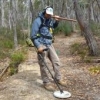
Some Things To Take Note Of With The Algoforce
PhaseTech replied to phrunt's topic in AlgoForce Metal Detectors
When swinging, I find my hand feels more natural when it's resting on the bottom of the handle. That gives me about an inch and a bit of clearance to the bottom of the control box. I'll probably still put a thin layer of tennis racquet grip tape as I did the same with the 7000 and 2300. Probably got so used to the foam grips from the SD days right up to the 5000.

